The Moon was almost full tonight—97%—and the sky was crystal clear, so we went on an evening photo walk, looking for views of St. Dunstan’s Basilica to feed Lisa’s series of relief prints from different angles.
Along the way I captured this view of Province House in under the Moon, one of those rare times my old iPhone SE rose to the occasion and performed well in low light.
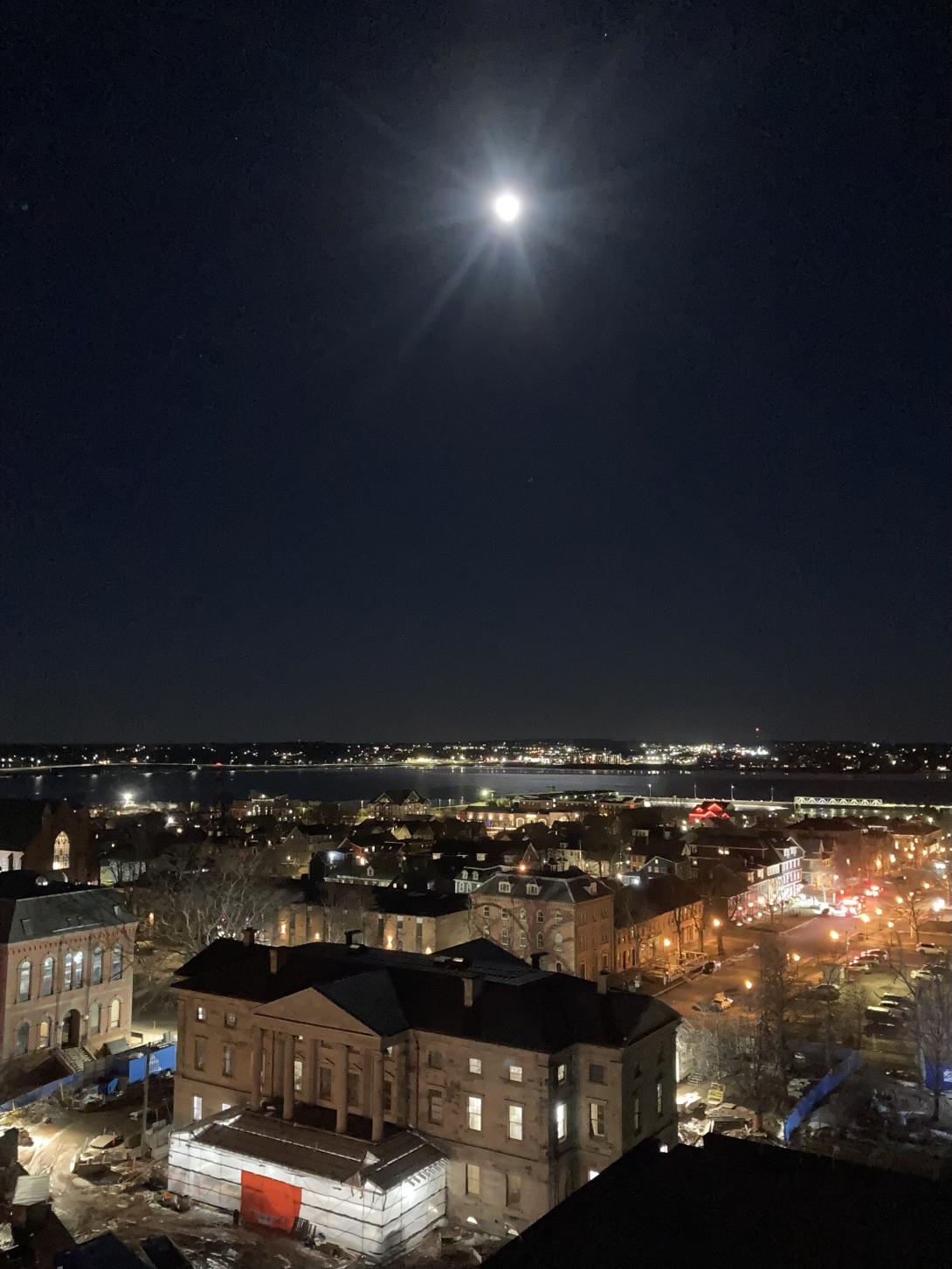
Five years ago I wrote about covers that were better than the original. I thought of that post when I found my way to the cover of Joni Mitchell’s Both Sides Now by Swedish singer-songwriter The Tallest Man on Earth.
From his introduction:
When the best song in the world has already been written, why do I write?
Well, it gives me some freedom, doesn’t it, to just be in my little place, and write basically the same song over and over, like they’re just verses of this one really long one I’m trying to figure it out.
Like this is the cliff from my 2010 song Little River, and, as you can see, it’s still here, because songs don’t really make cliffs go away. So I’ll probably write about it again.
But what is the best song in the world? It’s Both Sides Now, by Joni Mitchell.
Is his cover better than the original? I don’t know. But what a lovely cover it is.
(I found my way to The Tallest Man on Earth via Patrick Bunston, musician in his own right, and an extraordinary barista to boot).
This is A Month of Days, a project I’ve been working on for the last month:

It’s the simplest of all date books: a page per day, numbered in the corner in big bold red Akzidenz Grotesk:

The books are simple; the printing, assembly, and binding were simple steps too, there were just a lot of them.
I first had to figure out how to print the numbers on the pages in a way that I could cut and fold larger pages down into signatures that would be paged in the right order.
I made a couple of mock-ups before I got everything sorted, and then set out to set the type for each spread of pages:

From there it was a lot of printing, setting new numbers for a new spread, and cutting down pages into signatures, a process that resulted in this collection:

With the pages printed, I set out to design and print a cover. We’ve recently come into the loan of an etching press, and I was keen to try it out, so I carved a lino block of an abstract sun:
I chose a rich Akua Diarylide Yellow ink for the printing, and ran the block through the press on notebook-sized pieces of card stock, to produce:

When the suns had dried, I used the letterpress to print the “fronts” and “backs” of each cover:

The “A Month of Days” in all caps is from a font of a tiny perfect sans-serif typeface that I acquired somewhere along the way. Above it is an ornament is by Johannes Troyer, circa 1953, cast from the original matrices by Skyline Type Foundry.
On the back is the credit “Queen Square Press, 2025” set in very tiny and fiddly 6 point Spartan, from a font I inherited from Prince County Hospital many years ago.
With the pages and covers printed and dried, all that was left was the assembly: the cover, and each page, got scored and folded, collated into a “book,” and then punch, with an awl, in three places along the spine. I then bound the books together with a simple pamphlet stitch, using bakers twine, and put them overnight in the nipping press to settle.
The final step was to trim the edges, and round the corners:

I’ve made a limited edition of 50 notebooks, and they’re available for sale on our online shop now.
When you live on an island, sometimes, in the dead of winter, you need to GET OFF THE ISLAND. It doesn’t really matter where. Just OFF.
So today, with a rare day free from other commitments, Lisa and I took a day trip to Sackville, New Brunswick, the place that’s close enough to us that both qualifies as being off the Island, and “someplace.”
It was a lovely day trip.
We had lunch at Ducks aren’t Real (née The Black Duck), a restaurant I’ve visited many times that has never looked better, with a delightful new solarium at the back (with promise of a garden patio in the summer), a broader menu, and everything grounded in the solid performance that the space has always brought.
After lunch we went up the hill to Mount Allison University. We took a swing through the chapel—one of my favourite sacred spaces.
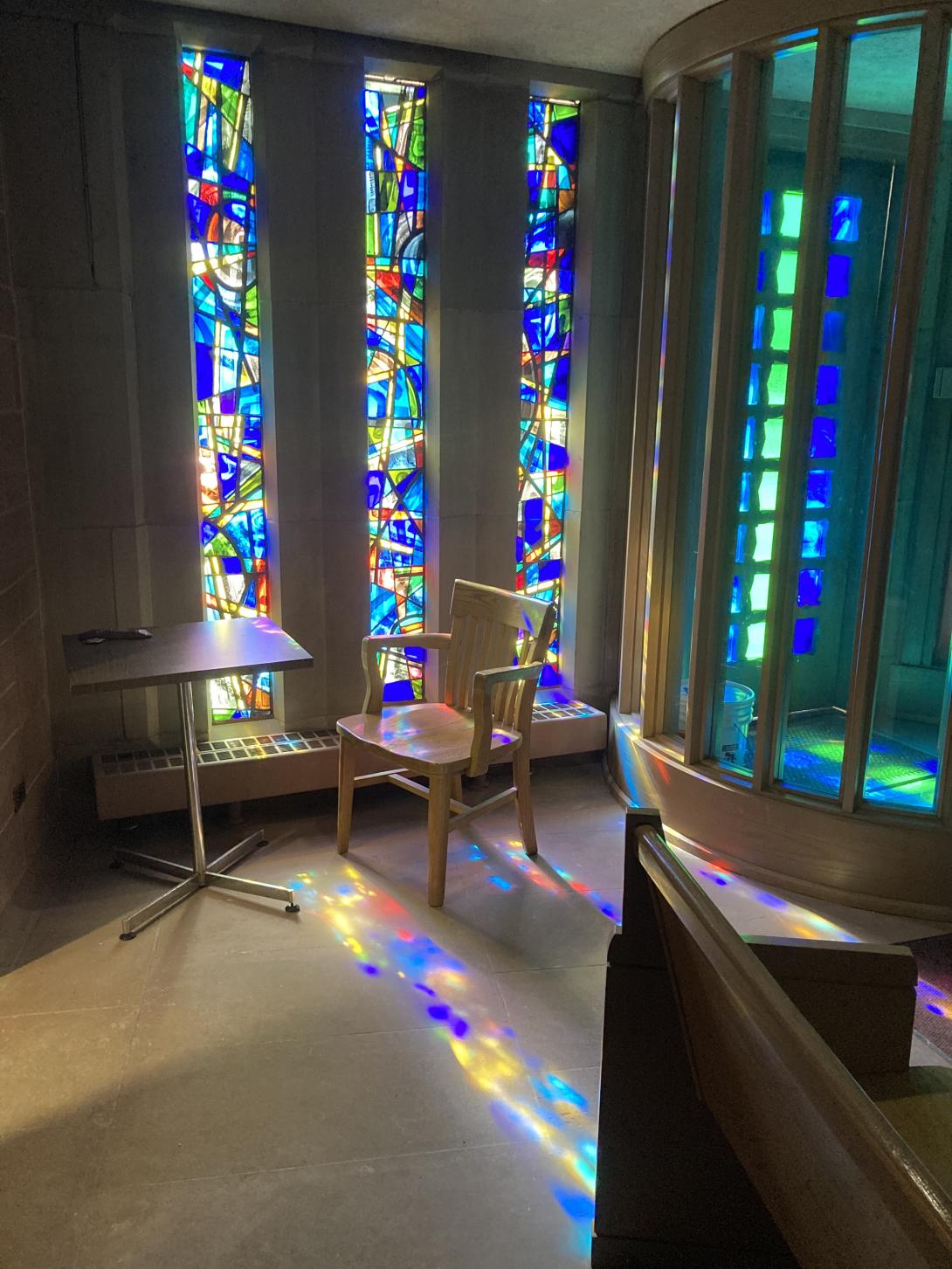
Next we walked next door and toured the Owens Art Gallery. The gallery highlight was the exhibition Hidden Blackness: Edward Mitchell Bannister (1828-1901):
Hidden Blackness is the first major exhibition of Edward Mitchell Bannister’s work ever presented in Canada—124 years after the artist’s death. Born in Saint Andrews, New Brunswick, Bannister was a self-taught, nineteenth-century, African American/Canadian painter of the Barbizon school known for pastoral landscapes and seascapes.
My favourite of Bannister’s works was River Scene (which can only really be done justice to when standing in front of it in the flesh):
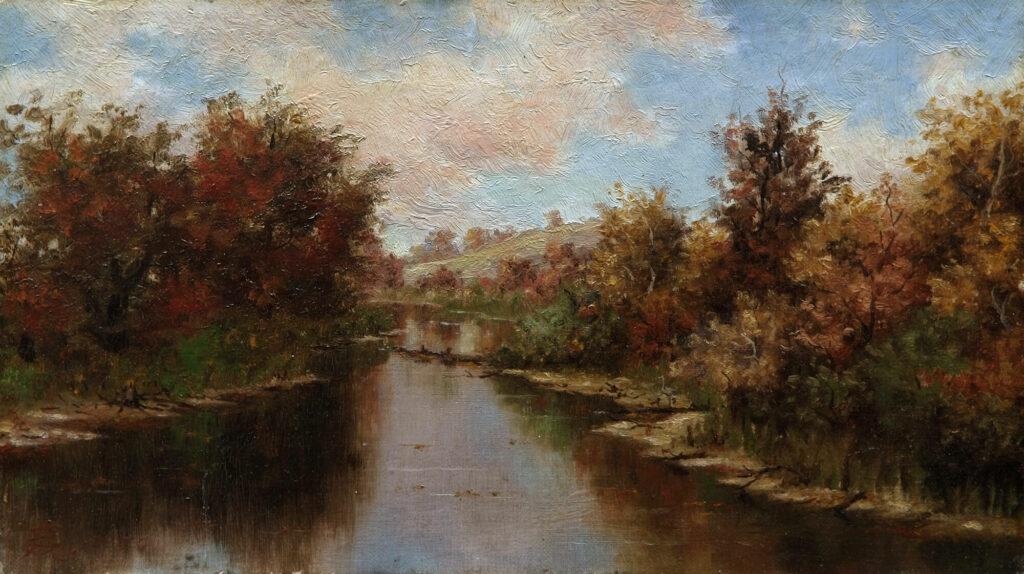
Edward Mitchell Bannister, River Scene, 1885
Art Gallery of Nova Scotia, Halifax.
Photograph by RAW Photography.
From the gallery we walked across campus to the Purdy Crawford Centre for the Arts, where the collegial and generous Erik Edson had agreed to give us an impromptu tour of the printmaking shops with very late notice. What a wonder: the building is interesting and spacious, the printmaking shop well-equipped and, a salve for for we basement printmaking dwellers, filled with light:
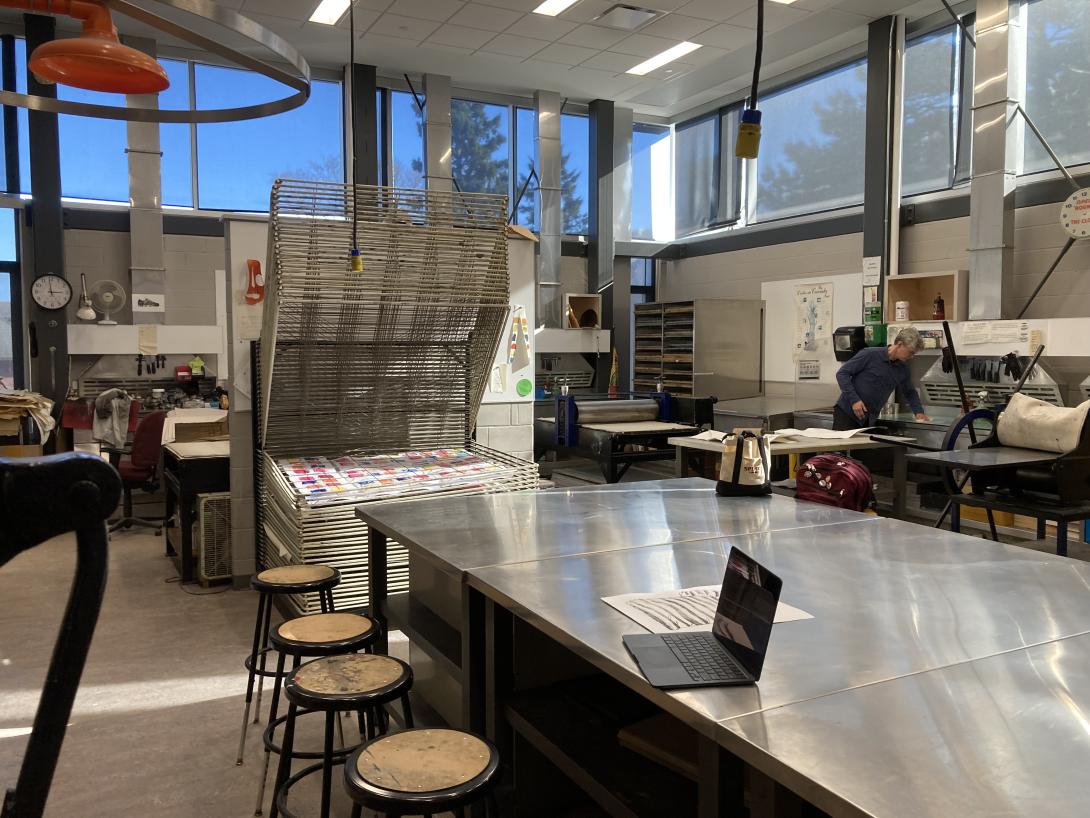
There’s a tiny letterpress shop shoehorned into a hallway, with a generous collection of type:
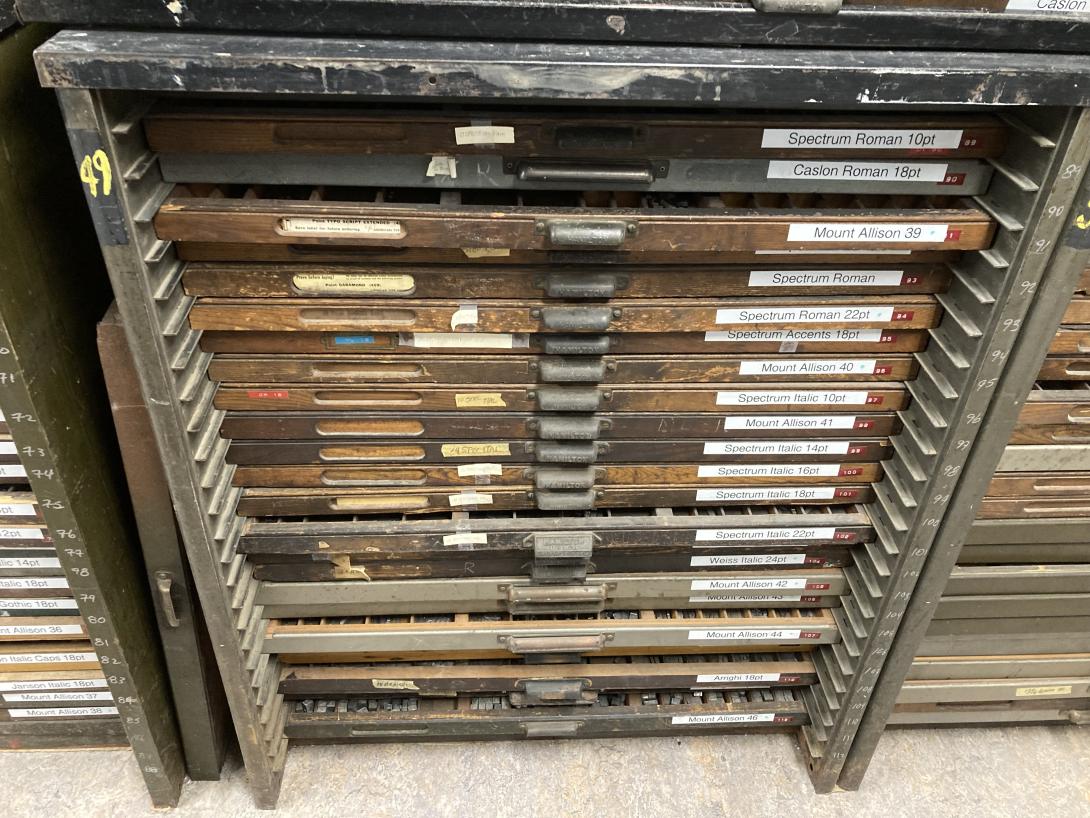
We said goodbye to Erik just as his 3:00 p.m. printmaking students started to arrive.
Erik suggested we stop by the Mount Allison bookstore on our way off campus, as they sell paper that might be attractive to us. He was right. They sell 50 inch Legion Stonehenge paper, well-suited for printmaking, for $4.99 a foot. We bought a 15 foot long strip:
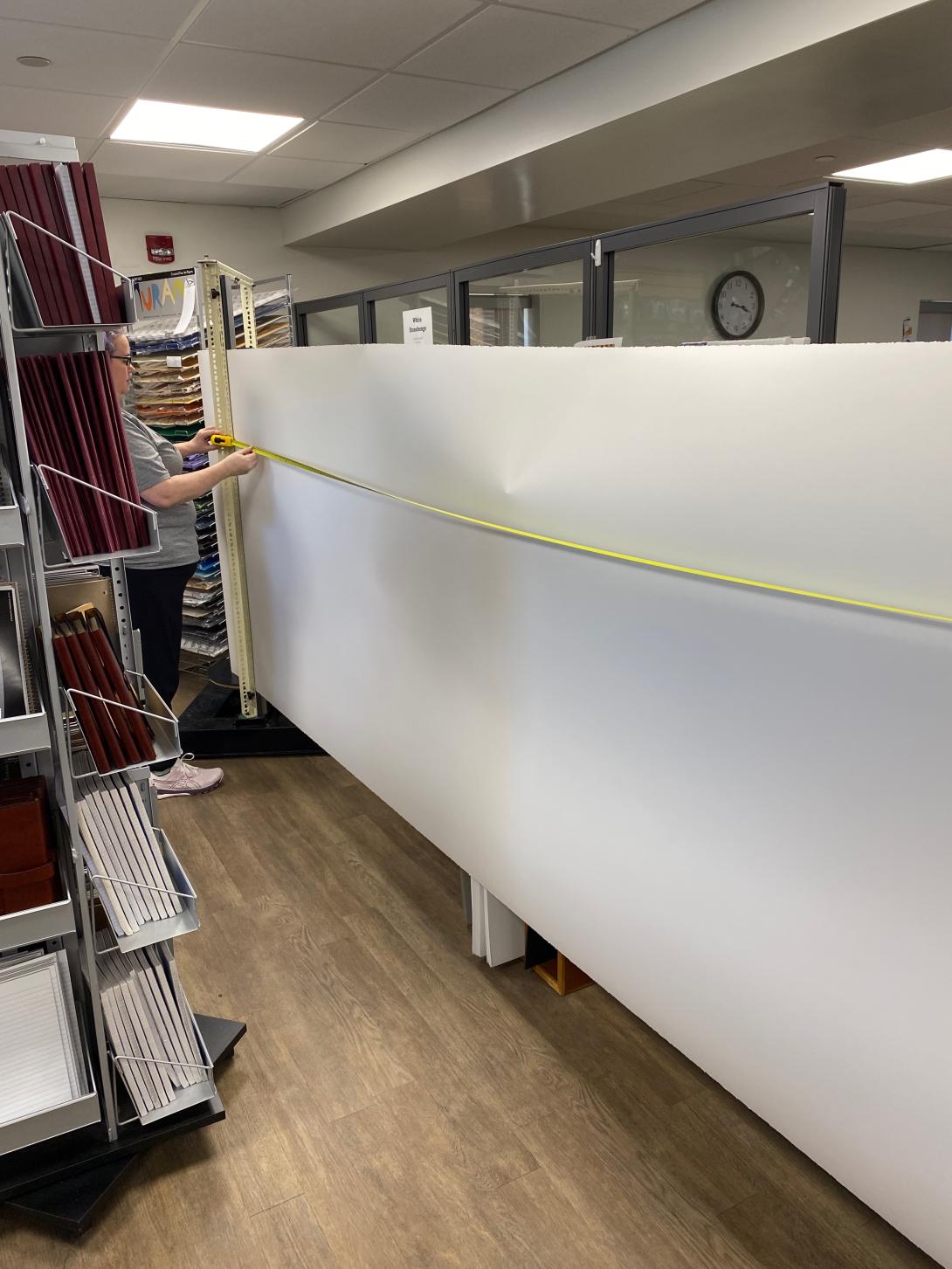
Paper in hand, we made a beeline for the car, as we needed to charge it before heading home.
We found a level 3 EV charger in front of the Visitor Information Centre, and were very happy to find that inside there was Café Tintamarre, a new venture from the couple who operate the Deus Ex Macina coffee truck at the Sackville Farmers Market (where Olivia and I had very good coffee back in 2023).
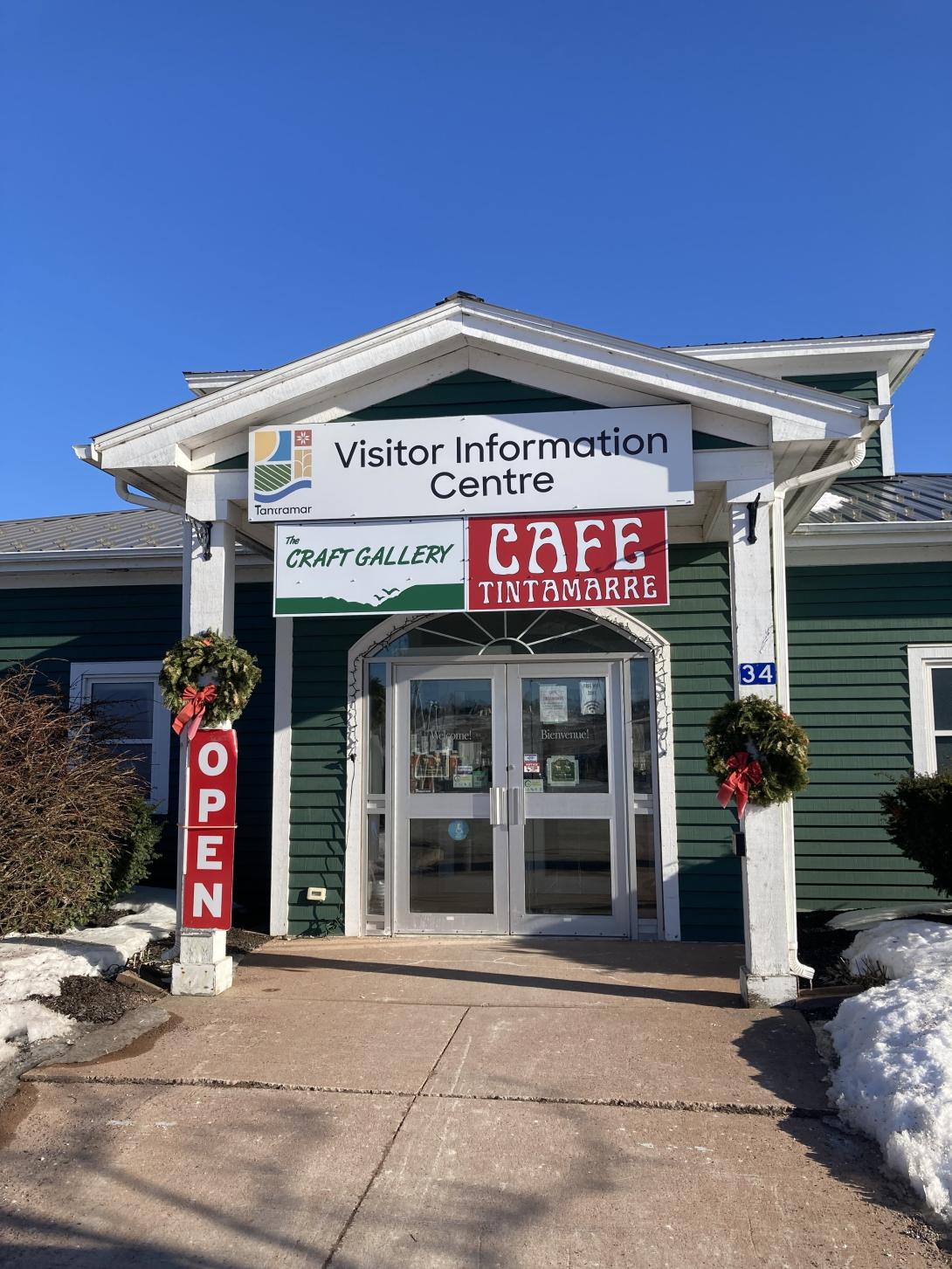
We left Sackville at 4:15, charged again (winter battery life!) in Borden-Carleton, and pulled into the driveway at home at exactly 6:00.
We left the Island. It was much fun: new things! new people! new ideas!
I came to the print shop this afternoon to, well, print something. But in cleaning up around the press I encountered a sheaf of 11”x17” scrap paper, previously used for packing on the press, that cried out for upcycling. So I launched into an epic procrastination.
I started by trimming the paper down to 4”x5½” pieces. I stacked them up and used my cordless electric drill to punch 3 holes along the top.
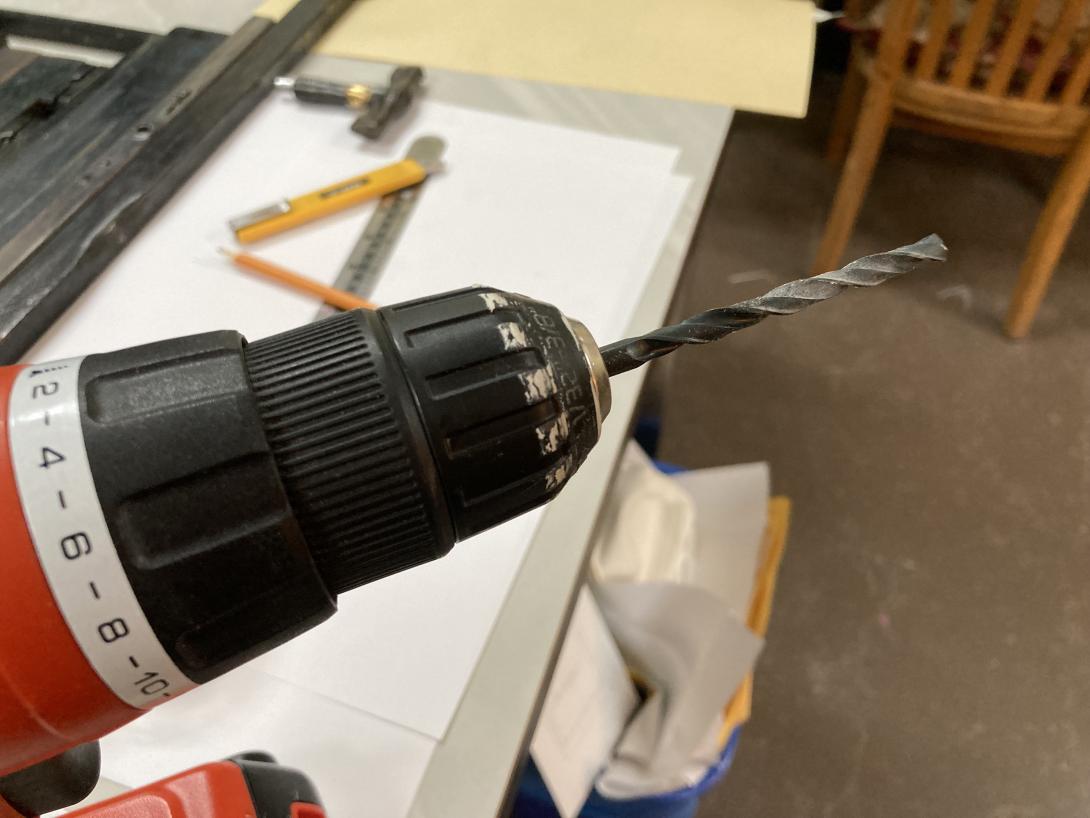
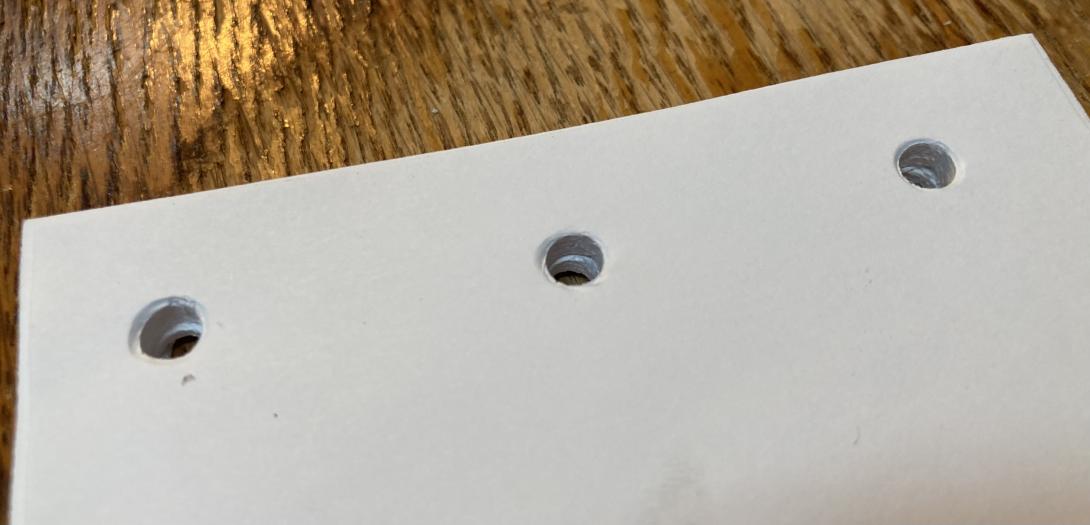
Next I set up the lettepress with a piece of “perf bar,” hardened steel teeth that can punch a perforation in paper. It’s used on the letterpress just as if you were printing, except there’s piece of steel on the taped to the platen to avoid damaging it:
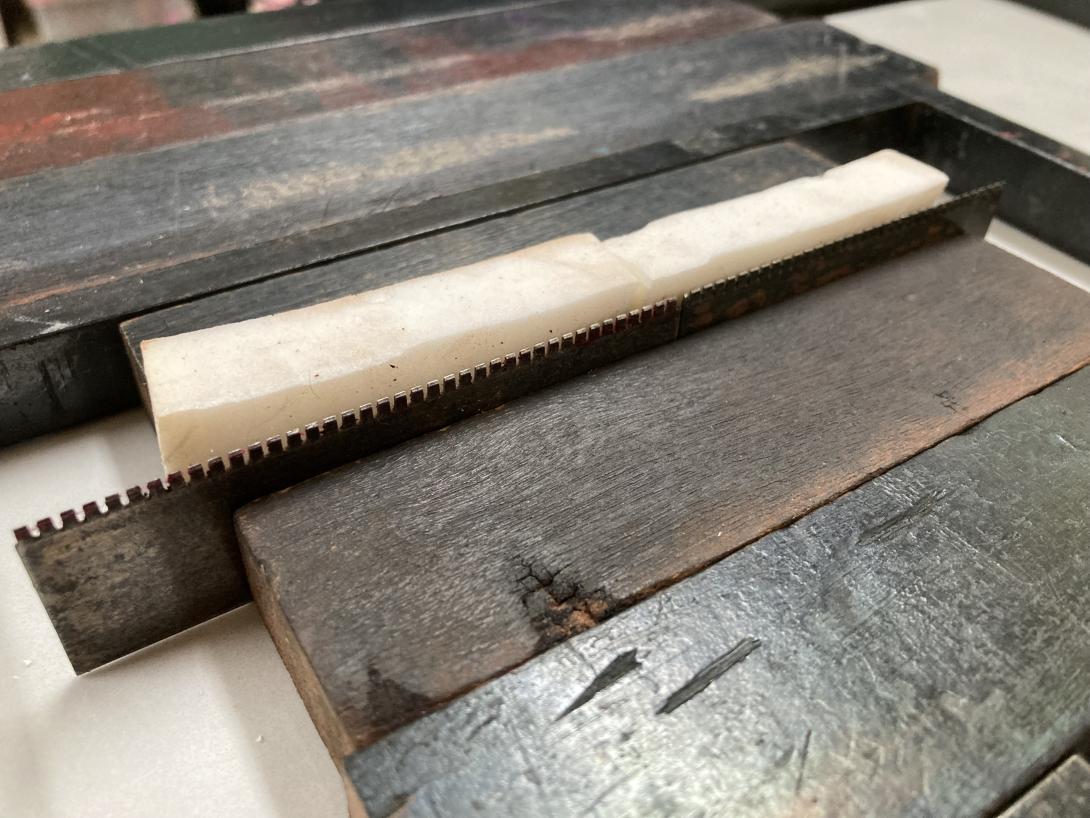
I stuck two pieces of sproingy white foam behind the perf bar to push the perforated pieces of paper off the teeth after perforation; otherwise they get stuck in the teeth, and I need to stop the press and peel them out.
As a final step, I assembled everything together—two covers made from upcycled tympan paper, the perforated pieces of paper—and bound it all together using three 1” screw posts (I credit Elmine and Ton with turning me on to this way of binding).
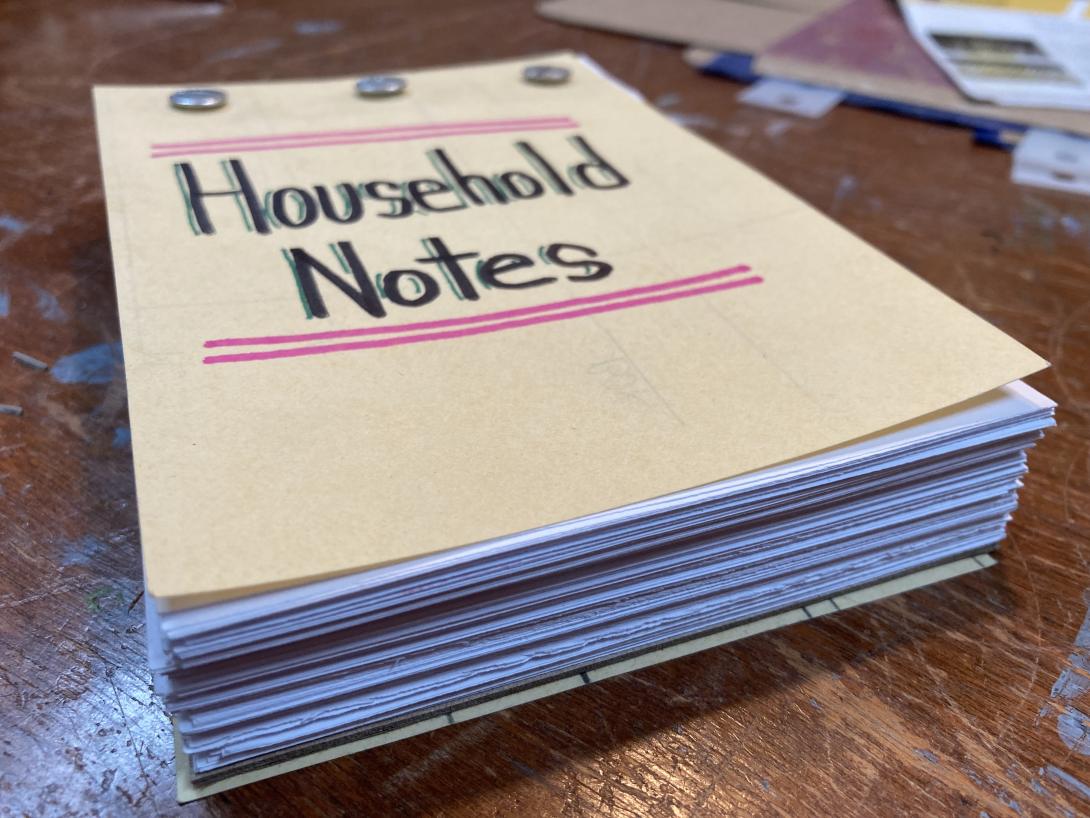
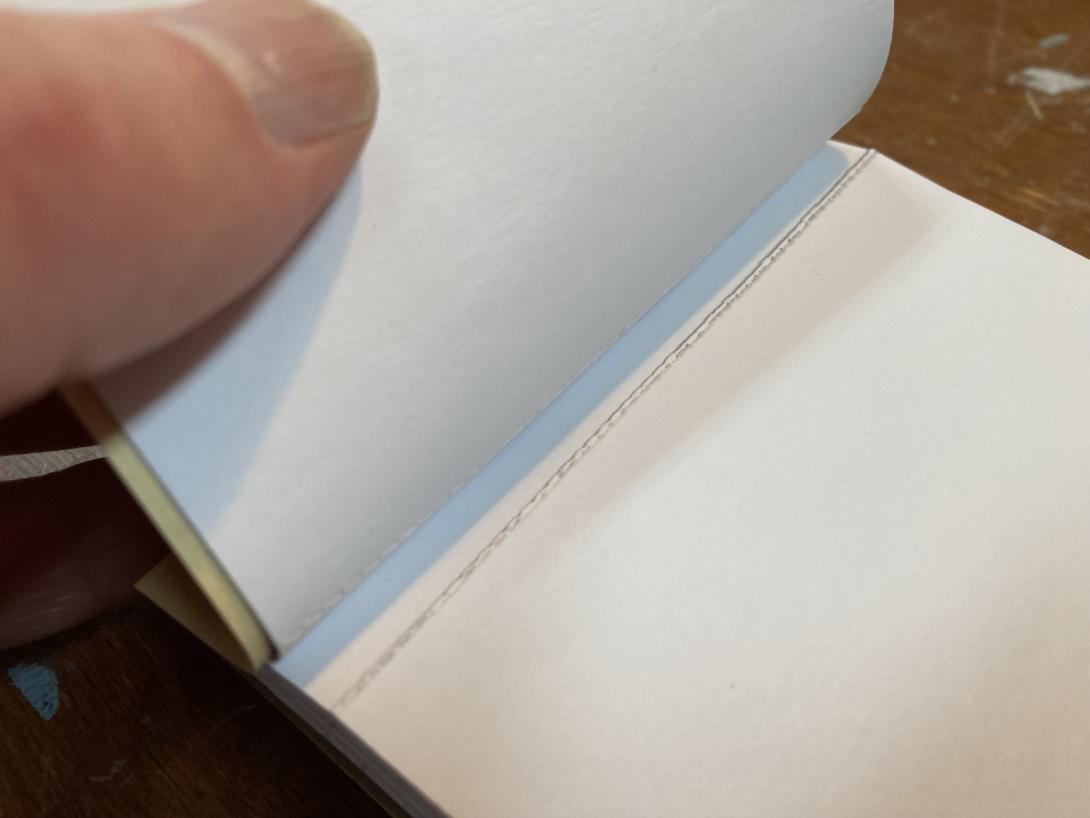
It was a two hour project from start to finish, and I never did get to do the printing I’d intended to do. But it was the kind of fanciful procrastination that makes creativity creativitying.
Meanwhile, across the studio, Lisa was engaged in her own flights of creative exploration.
(See also Perforated Notebooks, from 2019, where I covered some of the same terrain).
From Why I Cook, by Tom Colicchio:
Elizabeth is an industrial town nestled into northern New Jersey’s historic manufacturing belt. It’s best known for its shipping container port (one of the eastern seaboard’s largest), the titanic Singer Sewing Machine plant (where Grandpa Felix worked), and (as Lori reminds me) for having produced that totem of young-adult fiction, Judy Blume, who went to school with my mom. Rumor was that Elizabeth had once been lovely, but by the 1970s there were few parks and green spaces, unless you counted the thatch of trees by the Elizabeth River that also grew old tires and retired refrigerators. Maybe that’s why almost every Italian family I knew had a grandparent like mine, patiently coaxing vegetables and plants from small backyard patches of concrete, following the rhythms of their home country. Is that what has me out weeding in the mornings? Is it in my DNA?
This certainly describes my father’s parents, who cultivated a thriving garden in the yard of their house at 97 Mary Street in Brantford, Ontario.
They would have inherited this from my Ukrainian and Croatian great-grandparents, and doubtless didn’t give it a second thought: it’s what you did
If memory serves, it was more a garden they tended in parallel rather than collaboratively, but tend it they did, and the produce they harvested from that postage stamp-sized plot was awe-inspiring.
Here’s a photo of my grandmother holding my 2½ month old father, standing beside my Baba in her garden, in Fort William, Ontario in 1937:
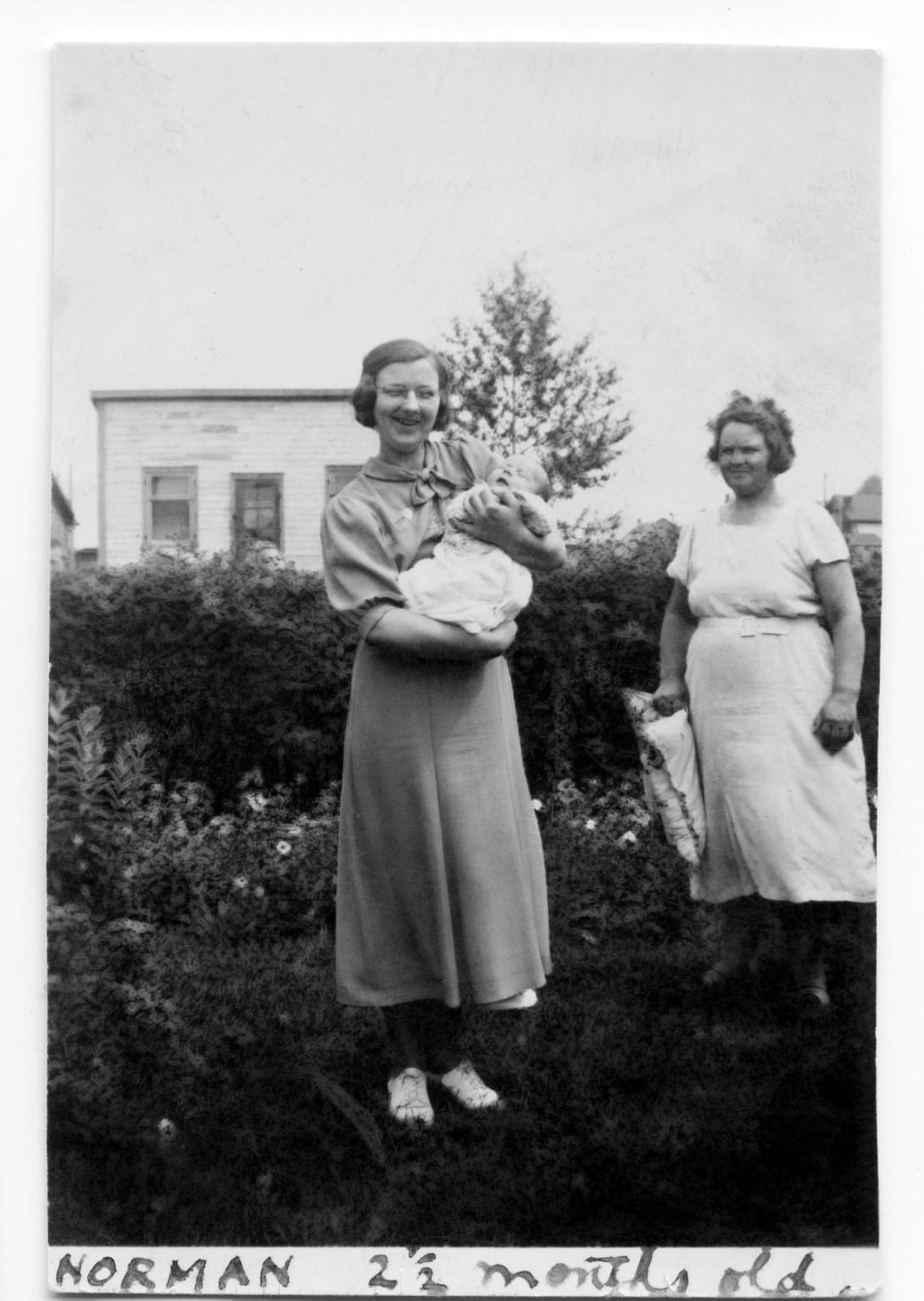
And here’s a photo, one I’ve posted before, from the Brantford Expositor newspaper, of my grandfather in that Brantford garden, holding prized beans:
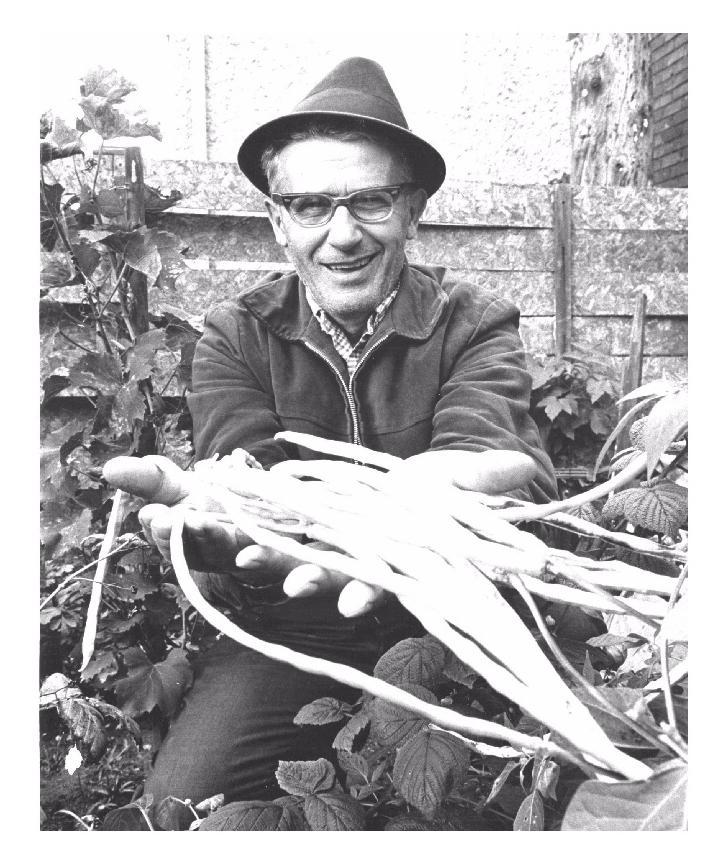
Harry Holman recently published an account of a wintertime journey from Charlottetown to Halifax in 1867, over two posts: one, two.
While the tale of the journey across the Northumberland Strait is itself harrowing, Harry reminds us that travellers first had to get from Charlottetown to Cape Traverse:
The road was utterly chocked with snow, in many places twelve feet deep, but my driver was an old stager at the work and knew well how to find a track even when there was no trace of a sleigh having passed over the ground before us. We had a splendid horse who worked as if he was aware that the journey had to be done, and that the better he stuck to it the sooner his night’s rest would come. The whole distance is about thirty-four miles by the road, but the devious route we had to follow made the distance nearly half as far again.
About seven o’clock we stopped for supper at a very decent house, which I will call, by courtesy, an inn. Here was good and substantial refreshment for man and beast.
I was pleased to see my driver showed himself deserving of the excellent horse he had, by the great care he bestowed on him ere he thought of even entering the house.
After an hour’s rest and having laid in a good source of caloric, we started in again. The cold was now intense. Notwithstanding that I was buried in buffalo robes. I felt as if dressed in muslin.
I shall never again complain about the interminably long 45 minute drive to Borden-Carleton, and the 13 minute drive over Confederation Bridge, by which we now complete the same voyage.
I had an appointment with my nurse practitioner at 9:15 a.m today, during which I had some blood drawn to allow them to run some tests.
I got a call back from her office at 1:45 p.m. with the results (everything in range).
Clearly our health care system has significant issues. But it’s also clear that, at least sometimes, it works amazingly smoothly and efficiently.
Looking for the extension ladder to help deal with ice dams on the back roof. It wasn’t there. I’m not actually sure we own an an extension ladder. But it was a nice snowshoe.
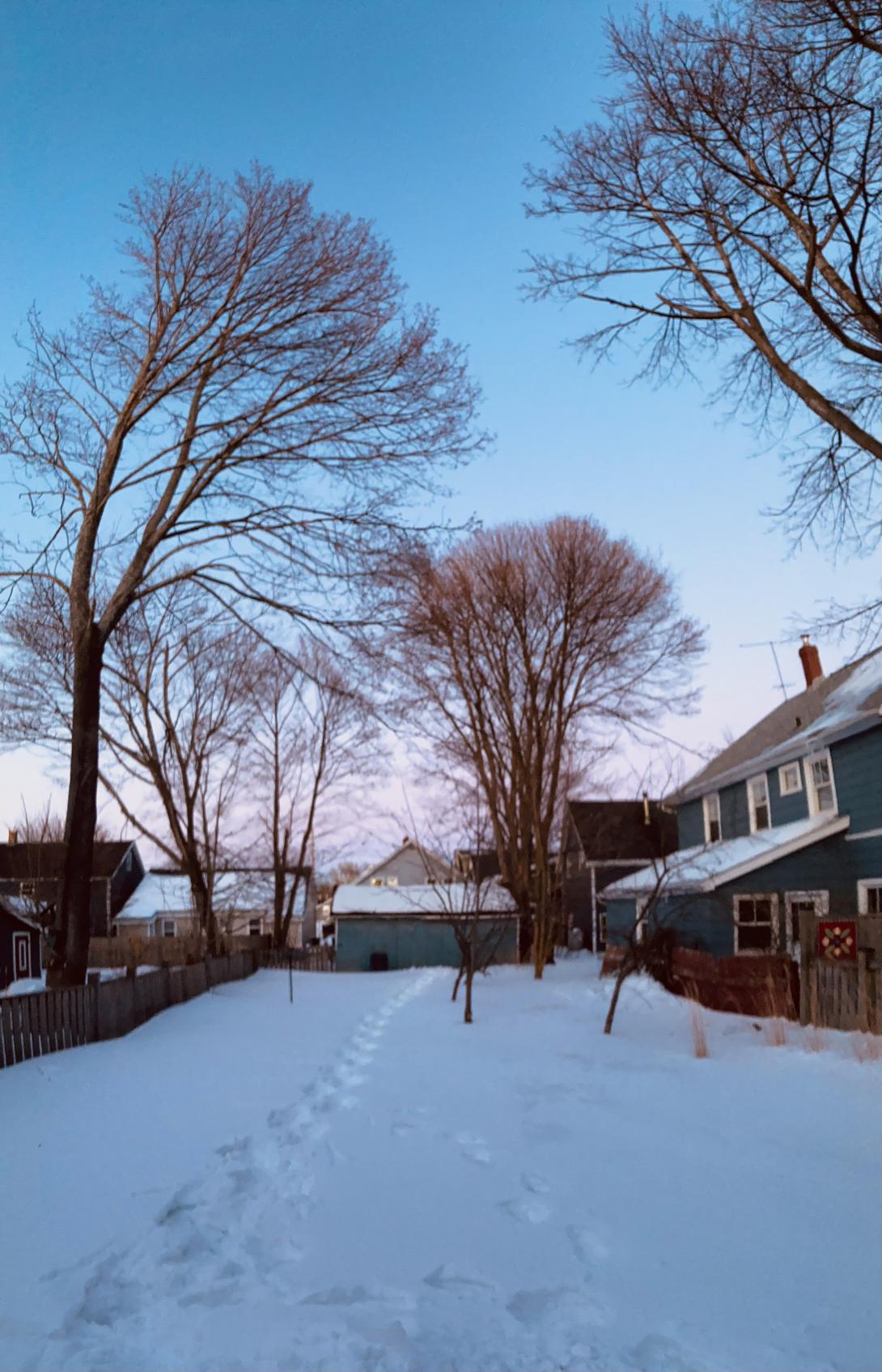
See also this summertime photo of the same view.
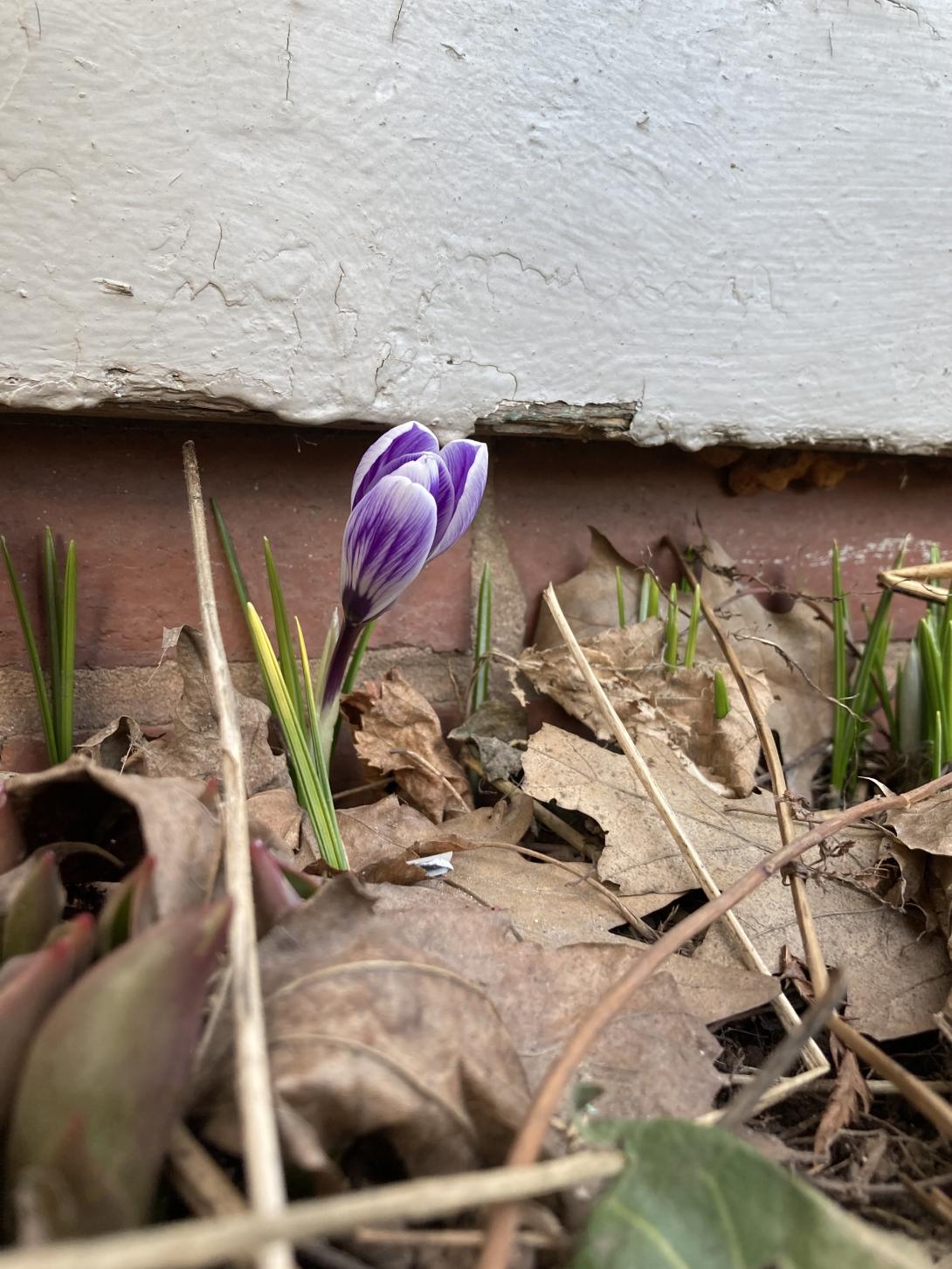
 I am
I am